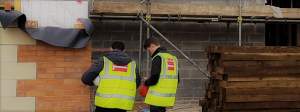2: Sketch Scheme
Following my articles summarising the RIBA Plan of Works, this article continues from Stage 1: Surveys. I will be writing a series of articles going into more detail on each stage to help people better understand the process by which architects work. This article covers Stage 2: Sketch Scheme.
What's the Point?
The brief is an ever-evolving part of the process, from start to finish, so don't expect it to be cemented by now, or even by the end of this stage. However, our first question is "What's the point?"; unless we understand why you've engaged in the process, we're unlikely to be able to deliver what you want. In many cases, we shape and change the brief from the one given us to be able to deliver the reasoning behind the development much more effectively.

The Concept
Once we've outlined the brief, we can work with you to come up with the 'big idea'. What's going to drive the scheme home, bring it the 'wow factor' or ensure that you get what you're looking for? It's even possible that we'll design what you've asked for, but when you see it, you realise that it's not going to work for you! This is the hardest stage for us to programme, as the success of this stage depends on how well we communicate together and how many times we may need to re-work the design until we've got a runner.
Don't be upset if the first set of drawings aren't what you expected. Turning a verbal description into a 3D built form is no easy task. Telling us why you don't like something is often more valuable than telling us what you do like and will help us develop the design.

Delivery Strategy
It's also important that we have preliminary strategies for delivering the scheme. A good example would be if you're building up to your boundary - can you get permission and access to scaffold on the neighbouring land? This could derail the scheme before we start, so it's important that we have at least a basic confidence that the scheme can actually be built and achieve the various permissions required. We may also need to consult with other professionals at this stage for their input on costs, ecology, structure etc.

Health & Safety
In the 21st Century this starts before we've even sketched the first line, but don't worry, it's just professionally guided common sense. We'll need to know anything that may affect health & safety from the beginning, e.g. will you be using the site/building during the construction phase, or are you aware of any potential issues?

Brief Again
Once we're all agreed with the design, we'll check again that this meets your brief, or if the brief needs to evolve again. Then, we can more to the next stage.


